







| Barred Grass Snake (Natrix helvetica (Lacépède, 1789)) |








|
|
Scientific name: Natrix helvetica (Lacépède, 1789) Common name: Barred Grass Snake French name: Couleuvre helvétique Order: Squamata Suborder: Serpentes Family: Natricidae Size: 80 to 110 cm for males, 160 to 200 cm for females. Habitat : Lake shores, ponds and river banks. Marshes. Food: Amphibians, small mammals, fishes. Reproduction : Mating occurs in April/May. Females lay 30 to 40 eggs attached in strings inside compost heaps, rotting vegetation or manure heaps. Depending on the temperature young snakes, 15 to 20 centimetres long, will hatch out 40 to 70 days later. Geographic area: Western Europe : England, the Netherlands, Belgium, western Germany, France, Switzerland, Croatia, Slovenia, Italia. It is replaced by the Grass Snake (Natrix natrix) further east. |
The Barred Grass Snake, previously considered as a subspecies of the Grass Snake (Natrix natrix) is now listed as a separate species since 2017 following genetic analyses. The Barred Grass Snake is a diurnal snake associated with water. It is a good swimmer and is often seen in water. It is able to stay as long as 15 minutes under water. It is also sometimes seen on the ground, in forests or meadows, where it can crawl far from water points. There are many variations in colour. The body can vary from dark green, to grey, brown and even to black. There are black marks on the upper side. The Barred Grass Snake shows a yellowish or white collar at the rear of the head, just preceding two large black marks. The under side of the body is usually a paler colour. The tail is long and thin. The oval-shaped head is clearly separated from the body. The eyes have a round pupil. The Barred Grass Snake hibernates inside natural cavities during a period of time depending of the local latitude. This snake is totally harmless for humans. |
| [To know more about the Barred Grass Snake] [Next picture] [Top] |
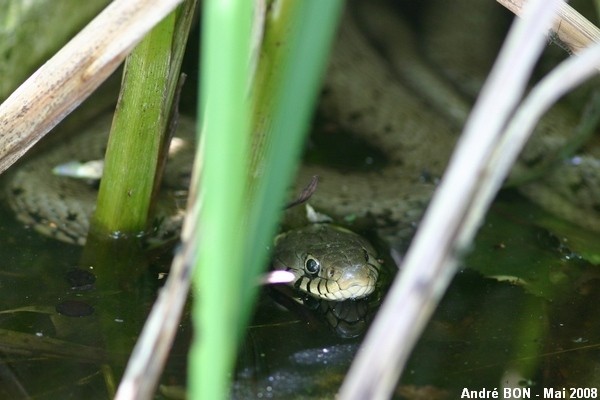
|
What a surprise to see this visitor in the small garden's pond. Though we can only see a small part of the body, it seems that the length of this snake is impressive. |
| [To know more about the Barred Grass Snake] [Next picture] [Previous picture] [Top] |
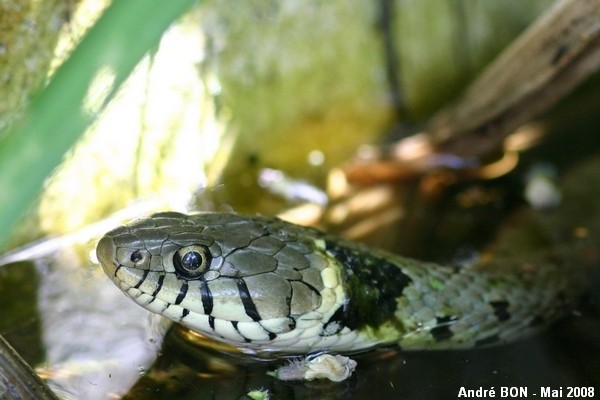
|
Taking pictures was very easy, no need to crop. The small size of the pond and the immobility of the snake allowed me to install the tripod and to take any needed time to shoot the pictures. |
| [To know more about the Barred Grass Snake] [Next picture] [Previous picture] [Top] |
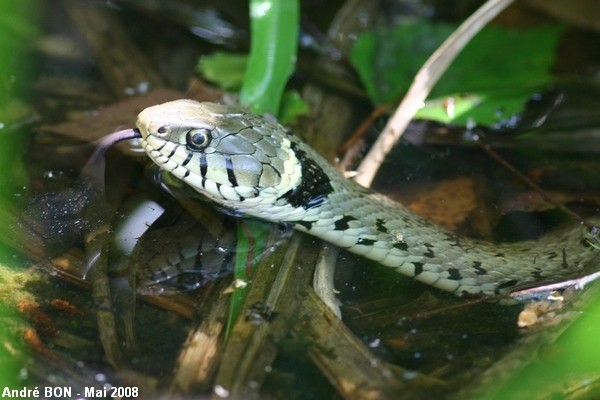
|
I had to explain to all the family that this snake is totally harmless and that its identification is 100% sure. I have observed this Barred Grass Snake at the same place several times in the following week, then no more. |
| [To know more about the Barred Grass Snake] [Next picture] [Previous picture] [Top] |
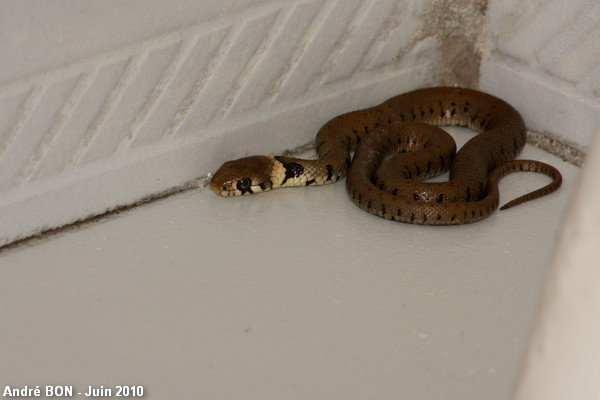
|
What a surprise to find a snake inside the house! This young Barred Grass Snake has crawled through the small space under the entrance door. |
| [To know more about the Barred Grass Snake] [Next picture] [Previous picture] [Top] |
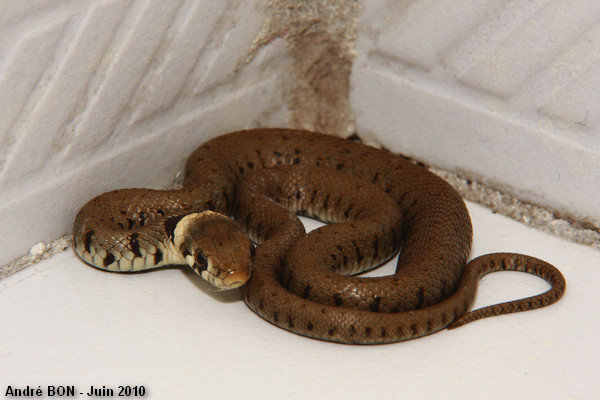
|
The picture is slightly misleading. This juvenile Barred Grass Snake must not be more than 25 cm long. Juveniles are then similar to adults, but smaller of course. It is reassuring to observe that these species reproduce in an environment with a rather high human pressure. |
| [To know more about the Barred Grass Snake] [Next picture] [Previous picture] [Top] |
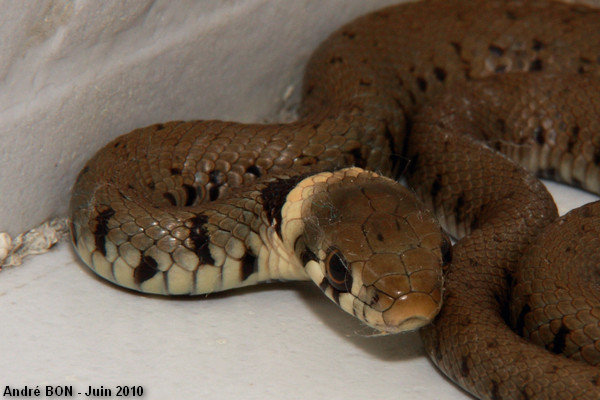
|
My hospitality has its limits. So I have kindly sent back this visitor to the garden, after the photo session, by delicately pushing it with a broom. |
| [To know more about the Barred Grass Snake] [Next picture] [Previous picture] [Top] |
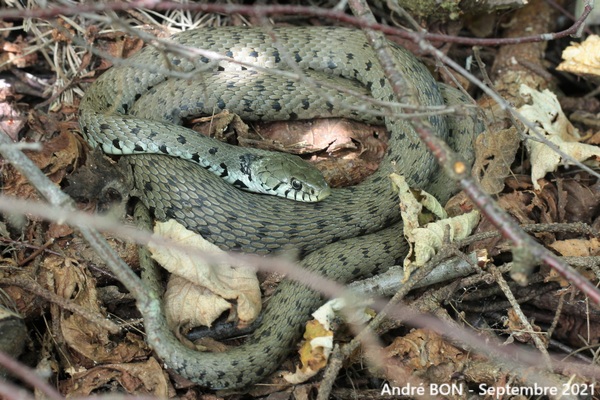
|
Mowing the small area of vacant land next to my house certainly pushed this Barred Grass Snake to seek refuge on a pile of wood in my garden. I was able to observe and photograph it for several days. |
| [To know more about the Barred Grass Snake] [Previous picture] [Top] |

|
I tried to estimate the total length of this snake and I think it is well over 150 cm. So we probably have a female. |